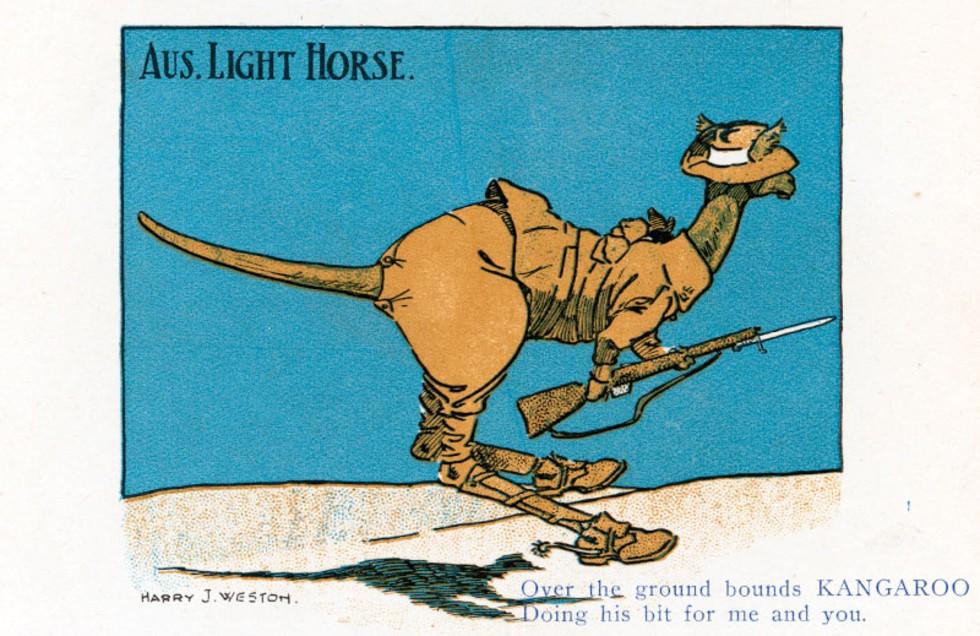


About the record
This work of art celebrates the contribution of Australian Light Horse regiments serving in the Middle East during the First World War (WW1). It depicts a kangaroo dressed in an Australian army uniform and includes the words ‘Aus. Light Horse. Over the ground bounds KANGAROO, Doing his bit for me and you’. The work was created by Harry J Weston, a Tasmanian cartoonist, painter and architect, who created some of the best-known Australian posters of the war. Weston applied for copyright of this work in January 1918.
Educational Value
- Throughout WW1, most people on the home front enthusiastically supported the Australian war effort. Works of art, and other items such as postcards, posters, banners, crockery, badges and embroideries, were created to recognise or commemorate those who were serving their country.
- The skill of the Australian Light Horse regiments during World War I was widely recognised by the Allies and received much attention on the home front. In August 1916, under the command of Australian Major General Harry Chauvel, they were involved in the decisive British victory at Romani, where Australian forces were key in defending the Suez Canal against a Turkish offensive. They had several more victories, including the famous Australian Light Horse charge at Beersheba, which eventually led to the Turkish surrender in October 1918. During the Middle East campaigns, almost 1,400 Australians were killed or wounded.
- While the Australian Light Horse had existed before WW1, it grew to five brigades over the course of the war, all of which served in the Middle East.
- Although the Australian light horsemen were mounted troops, the horses were primarily used to transport the men and their equipment and to assist with hasty withdrawals. Sometimes the light horsemen did work usually done by cavalry units: for example, reconnaissance and patrolling.
- Typically, the men would dismount to engage in combat. There were several exceptions, however—for the charge at Beersheba on 31 October 1917, for example, the men charged on their horses.
- During WW1 over 100,000 Australian horses were shipped to Egypt to help with the Allied campaign. The horses used by Australian, British and Indian troops were known as 'Walers', because they were first sourced from New South Wales. The horses were sturdy and hardy and could travel up to 80 kilometres a day carrying heavy loads. They required about 30 litres of water each day, but they could survive for up to 60 hours without drinking.
- Keeping the horses fed and watered was a huge task, and local Egyptians were employed to assist with this. Nonetheless, hundreds of these horses died each week from illness or injury during the campaign. At the end of the war, the surviving horses were either sold – mainly to the British Army in India – or destroyed.
Related themes
Need help with your research?
Learn how to interpret primary sources, use our collection and more.


